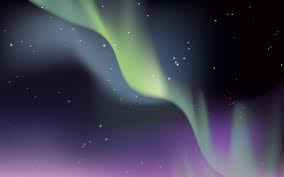
Aurora borealis may dip into state tonight, say CU-Boulder experts
University of Colorado Boulder space weather experts say a powerful solar storm may cause the aurora borealis to light up as far south as Colorado and New Mexico in the coming nights.
Daniel Baker, director of CU-Boulder’s Laboratory for Atmospheric and Space Physics, said space weather forecasts indicate there is a good chance a coronal mass ejection tied to a large solar flare from the sun Tuesday may impact Earth today, hitting the planet’s outer magnetic shield and causing spectacular light displays tonight and perhaps tomorrow night. National Oceanic and Atmospheric Administration experts have estimated there is a 90 percent chance a coronal mass ejection will hit Earth today.
“The aurora borealis, or ‘false dawn of the north,’ are brilliant dancing lights in the night sky caused by intense interactions of energetic electrons with the thin gases in Earth’s upper atmosphere,” said Baker. “The aurora are most commonly seen in Alaska, northern Canada and Scandinavia when the sun sends out powerful bursts of energy that can strike Earth’s protective outer magnetic shield called the magnetosphere,” he said.
“The strong solar winds associated with the storm events generate strong electric currents when they blow by the Earth’s magnetosphere,” said LASP Research Associate Bill Peterson. “These currents become unstable and drive processes in the magnetosphere that accelerate electrons down magnetic field lines where they hit the atmosphere over the poles.”
“One can think of aurora in some ways as if the Earth’s atmosphere is a giant TV screen and the magnetosphere generates intense beams of electrons that blast down along magnetic field lines to produce the red and green light picture show,” said Baker. “If the sun produces extremely powerful energy outbursts, the aurora can move to much lower latitudes than normal and then one can see the fantastic light displays in the lower 48 states, even as low in latitude as Colorado and New Mexico.”
According to Peterson, geophysicists have been measuring magnetic activity – essentially “wiggles” on instruments measuring Earth’s magnetic field – for over a century. The scientists have come up with a planetary magnetic index known as KP, ranging from 0 (quiet) to 9 (very active).
“The aurora is typically seen in Canada for KP less than 4,” Peterson said. “When the KP is 9, auroras can sometimes be seen as far south as Mexico City. Auroras are seen in Colorado when the KP is about 7.”
Peterson suggested those interested in seeing the northern lights or want to report sightings visit http://www.aurorasaurus.org, a website called “Aurorasaurus” and led by the Los Alamos National Laboratory in New Mexico. The site is designed as a real-time map of confirmed aurora sightings and includes a place for citizen-scientists who want to participate to report aurora sightings in their own neighborhoods.
For additional information visit NOAA’s Space Weather Prediction Center at http://www.swpc.noaa.gov. For more information on LASP visit http://lasp.colorado.edu/home/.